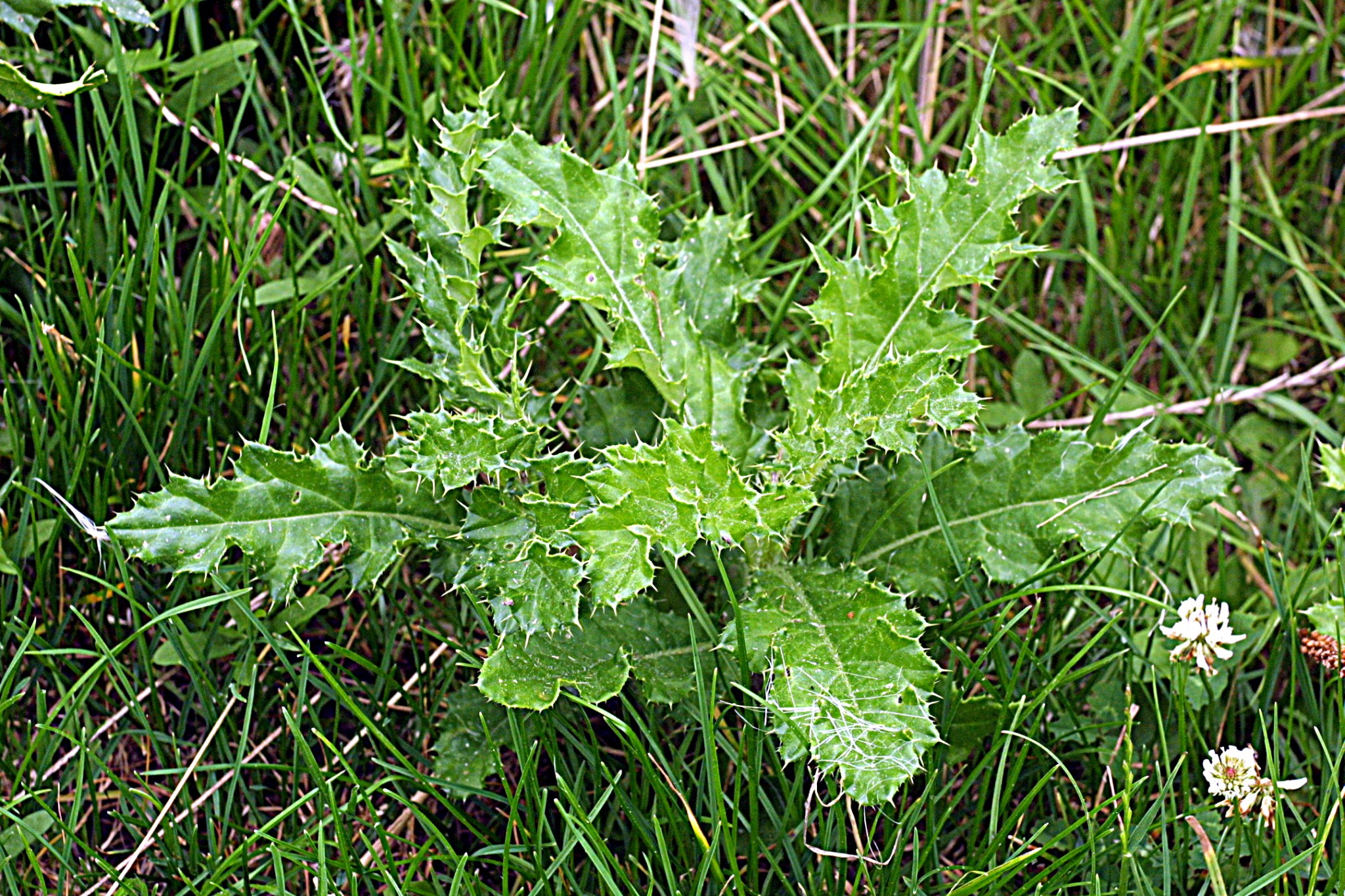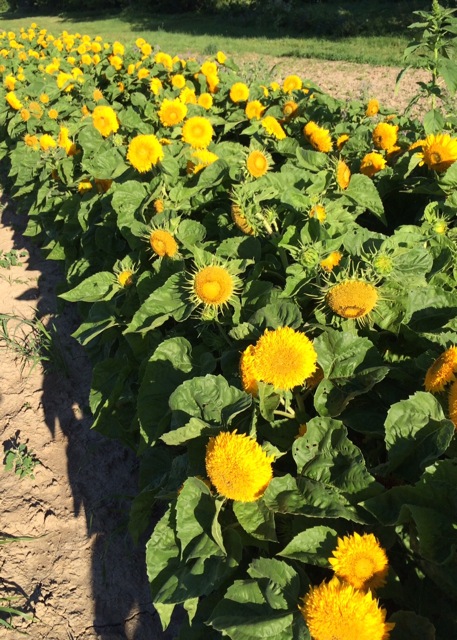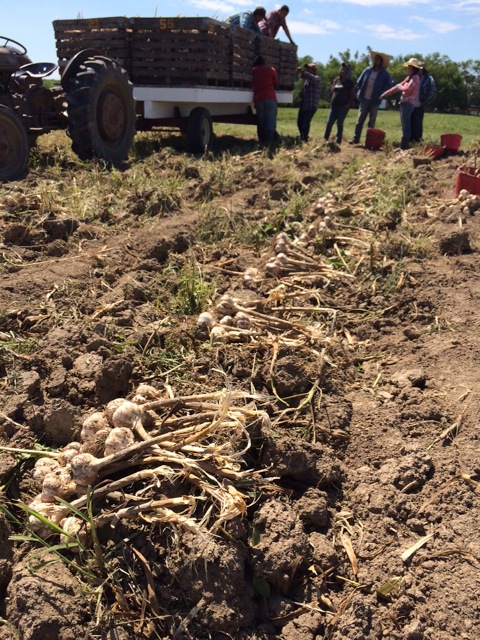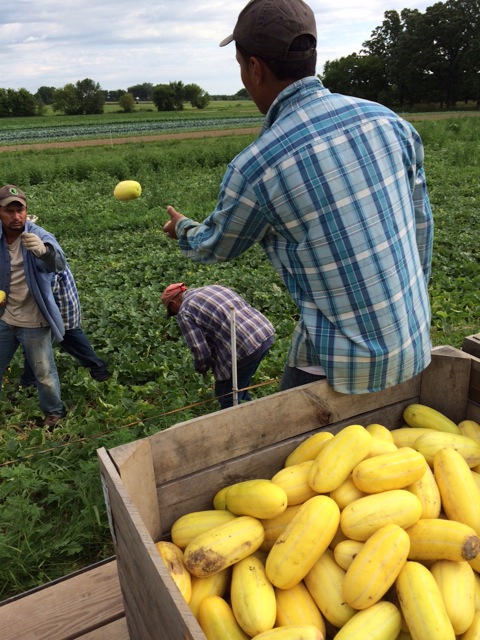Farmer John Writes: How to (try to) Properly Make a Bed
Welcome to our Ninth Harvest Week
Weeds and Where are Your Cilantro and Dill?
I seed a bed of dill and cilantro every three weeks or so: nine 330 ft rows of cilantro; nine 170 ft rows of dill—both types of seeds planted at 60 seeds per row foot, 1/4 inch deep in finely tilled soil. You might wonder, then, why you are not receiving cilantro and dill every three weeks or so. The reason is weeds that just won’t stop.
As you may have already read in a past issue of Farm News, I have myriad methods for controlling/eradicating weeds. One of the most reliable methods is a practice called “stale seedbedding.” Stale seedbedding involves shallow tillage of an unseeded bed to kill emerging weeds and to encourage the germination of weed seeds that are in the upper two inches or so of soil. After stale seedbedding, we wait for a rain, or we irrigate, to further encourage weed germination, then we till the bed again. Usually, it takes only 3 or 4 stale seedbedding cycles to make a bed suitable for seeding weed sensitive crops, such as cilantro and dill. We have stale seedbedded our cilantro and dill beds 10 times or so this season. We have made no apparent progress in reducing the “weed bank” of weed seeds. It’s not just one variety of weed that persists—it’s lambsquarter, pigweed, velvetleaf chickweed, purslane, and more. (I know some people like to eat purslane, but harvesting this unruly weed for our CSA boxes is too much of a challenge.) I have on a few occasions decided that a bed was finally sufficiently weed free, then I have gone ahead and seeded it to cilantro and dill, and then these crops were quickly engulfed by weeds. I still plan to provide you with cilantro and dill later in the season.
Check Your Greens for Thistle Leaves that may have Escaped our Scrutiny
Another weed that has been flourishing this year is thistles. Oh, my, have we been fighting thistles—mowing, pulling, hand-hoeing, tilling them under. I suspect this proliferation has to do with the relentless rains. The thistles have not been so prolific as to significantly cut down on our yields, but they are an enormous nuisance.
My policy for thistles in greens is:
1) If part of a bed is overrun with thistles, we just plow it under—we don’t attempt to harvest it.
2) If we encounter a patch of thistles while we are harvesting with our greens harvester, we lift the greens harvester up above the greens to make sure we don’t harvest any of those thistles.
3) The people on the back of the greens harvester (where the greens are elevated into crates) are instructed to remove thistles that might be in the greens.
4) The people bagging the greens are instructed to remove thistles and other weeds.
On a broader note, thistles are a bane on many midwestern farms. My mother used to relentlessly hoe thistles in the corn. (She told me she started doing this at the age of five.) When my siblings and I were little, we cut the thistle flowers in the oats, so they would not go to seed. I was recently given advice by a fellow farmer on how to better control thistles through deep tillage and then seeding with cover crops, which I will happily undertake, since thistles are not welcome on my farm.
Are You a Weed Eater…ahem…Forager?
Thistle leaves are very prickly and you would not want to bite into one raw with the prickers intact. You might want to juice it, though—the nutritional and medicinal benefits of the thistle are quite well documented, for instance here: www.eattheweeds.com/thistle-touch-me-not-but-add-butter-2.
For the most part, the fields where we have been seeding our baby greens this year have been quite free of weeds, but some weeds still manage to find their way into these beds. In general, we recommend that you check your bags of greens, since it’s impossible for us to find every stray blade of grass or broadleaf weed that might be hiding in our crop. Of course, you might not mind eating a stray blade of grass, a pigweed leaf, or a buttonweed as a complement to your salad. If in doubt about an unscheduled guest in your greens, use the Internet to identify the visitor and determine how to proceed. Most of the weeds we fight on the farm get favorable ratings on the Internet for being healthy foods.
Please Visit our U-Pick Garden ASAP
Our U-Pick Garden is loaded with flowers and yellow and green snap beans. Please visit the garden ASAP for these harvest delights. The beans and many of the flowers will flourish for weeks if you come and harvest them now, as this will prevent them from going to seed.
The Weather
This past week, I feel we have been farming on a different planet than prior in the season. Hot, dry winds gust through our fields. Dust finds its way into our office and blankets the desktops. We are now irrigating almost non-stop. Farming is an ongoing encounter with mysterious forces.
Upcoming Crops
Garlic is an expensive, labor-intensive crop to grow. It seems our shareholders can never get enough of it. As promised, I planted more garlic for this season. You will get a nice first bulb of our German White Porcelain garlic in your box soon.
As a prelude to the watermelons ripening, the Sun Jewel melons have ripened. These melons are quite crisp; they taste a bit like a pear. You’ll receive a Sun Jewel in your box this week.
Our Lovely, Long Term Shareholder, Joan Siekierski
Joan Siekierski and her family have been Angelic Organics shareholders almost from the start 25 years ago. She picks up her vegetables at the farm, attends almost every Farm Field Day, and offers many insightful words of encouragement and support for our CSA endeavors. Joan and her husband David co-founded and operate the thriving Bagels & More cafe in Beloit. In her usual cheerful manner, Joan delivered delicious chocolate chip zucchini muffins to our hardworking crew this past week.
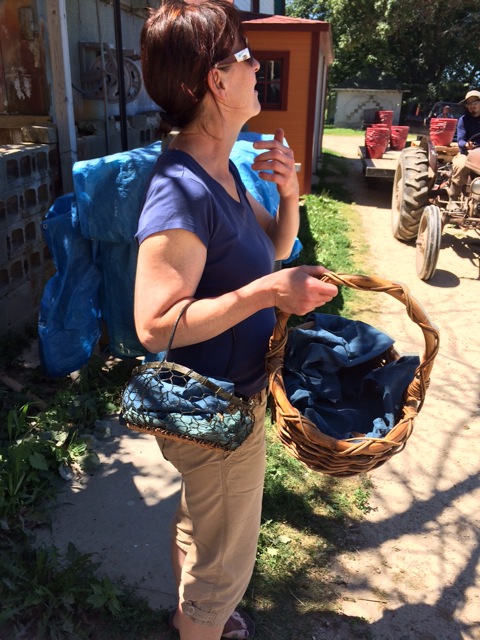
Joan tends the Tractor DriveThru with her Muffins, as Colton eagerly approaches on the Fordson. Sorry, Colton, Joan didn’t make enough muffins to fill all those buckets.
Sign up for the Free Recipe Service
Make sure you sign up for the Local Thyme recipe service we offer with this year’s share. It received many great reviews from our shareholders last season. Go to http://www.localthyme.net/register. Enter the farm code AOLTFREE under “I am a member of a CSA farm.” Click the sign-up button.
Let us Know
Let Shelly know anything you’d like to share about this week’s box email hidden; JavaScript is required. Please note the week and day of delivery, your site, when you picked up your box, and any comments about your box.
Please Fold Your Boxes Properly and Return Them
The farm re-uses the vegetable boxes. Flaps are easily torn when the boxes are dismantled improperly, and then the box bottom might later burst open with fresh, organic local produce heading towards the floor. Please return your empty, flattened vegetable box to your delivery site. If you receive home delivery, place it in the location where your box is delivered.
More from Shareholders
Visit us often at www.facebook.com/angelicorganics, where we post exciting farm developments regularly, and shareholders post recipes, tips, and photos.
Saturday’s Box Contents
Please Note: this summary is written before you receive your box—be aware that some guesswork is involved. As always, be sure to thoroughly wash all of your vegetables.
Salad Greens – lettuce
Cooking Greens – chard
Fruiting Crops – sweet corn, zucchini/summer squash, cucumbers, sweet peppers, sun jewel melons, watermelons, musk melons (probably)
Alliums – garlic
Your Farmer, John
The Angelic Organics Learning Center is calling all kids who love to get dirty!
At our Kids with Cob workshop, we create cob, (a natural building material made from sand, straw and clay), then use it to build our very own eco-villages. Join us on Saturday, August 15 from 1pm-4pm. $12 per person. Pre-register on our website: http://www.learngrowconnect.org/events
P.S. If you’d like to make a day of it, you can also sign up for Family Pizza Night on the same day from 5pm-8pm.



